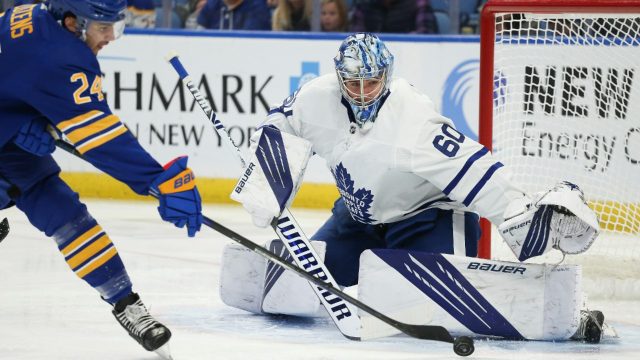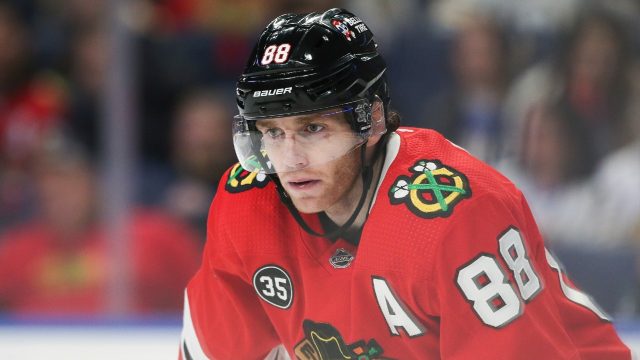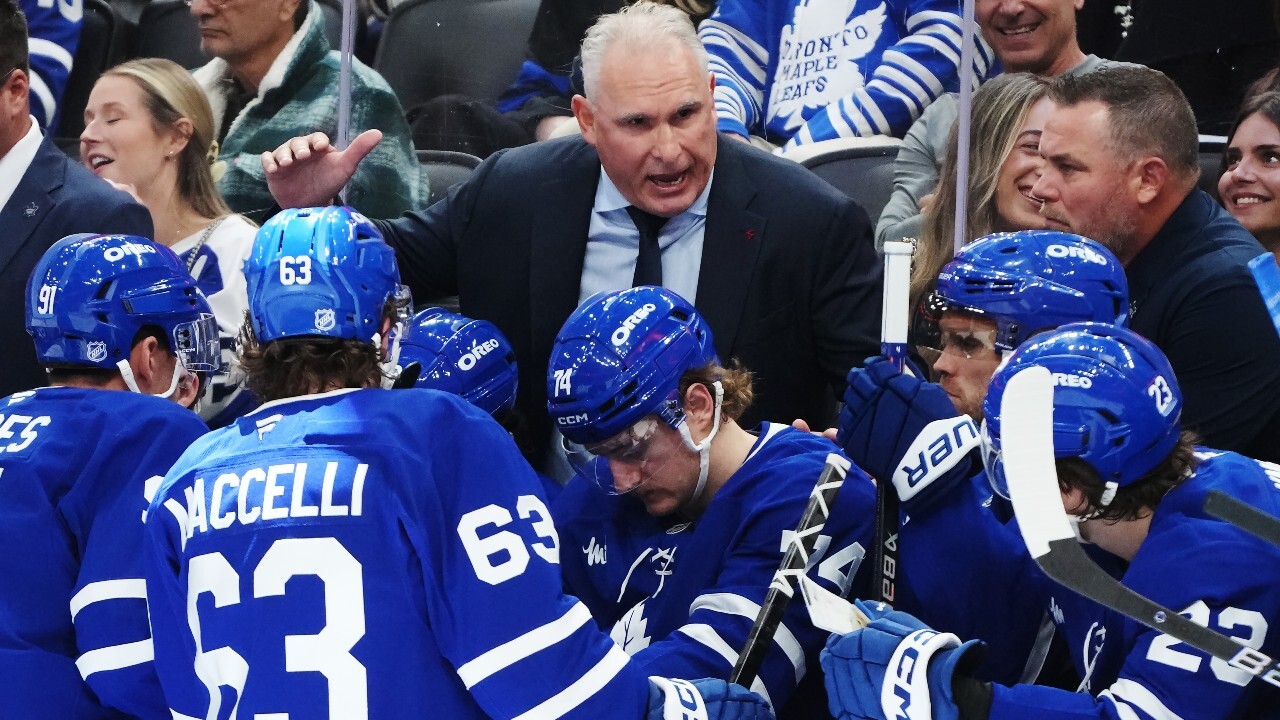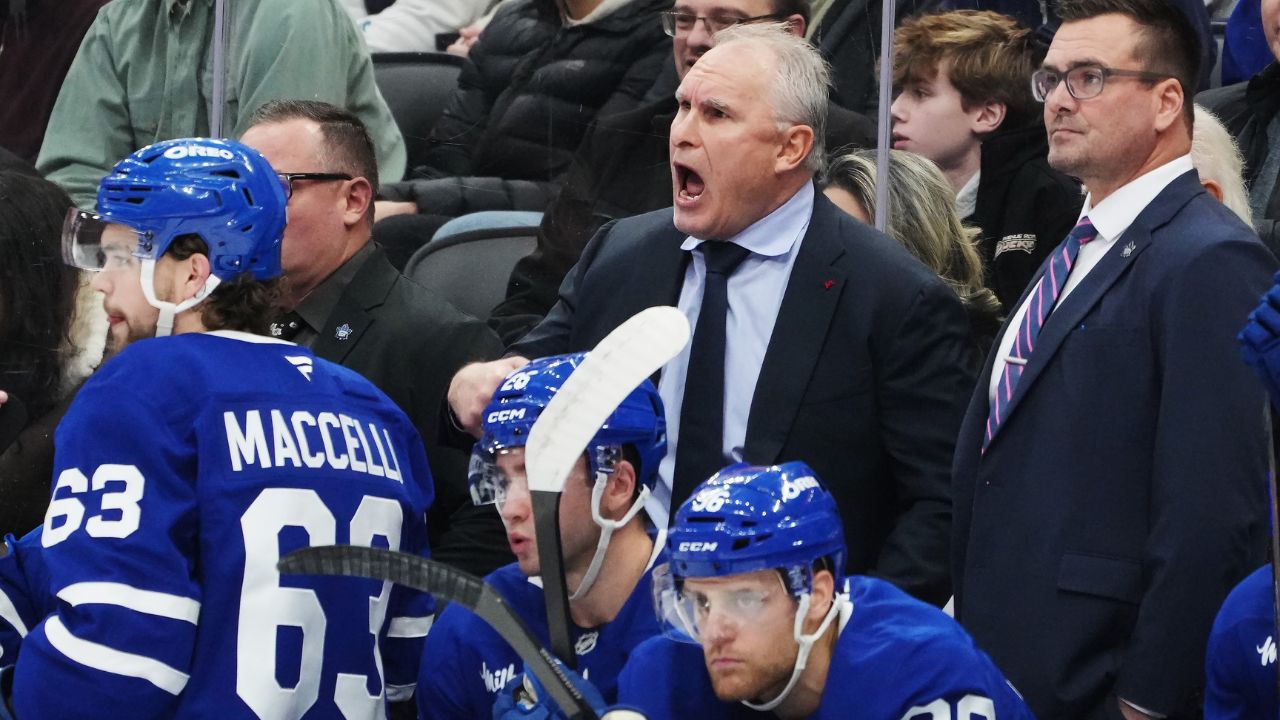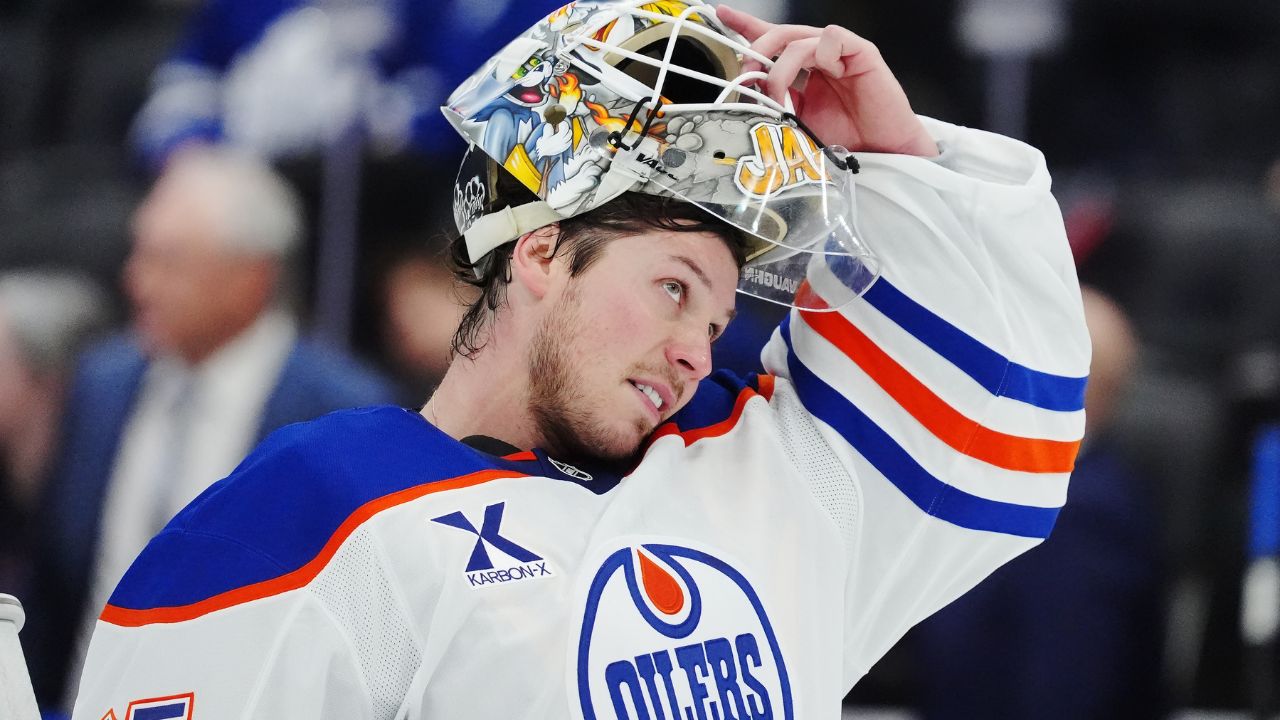
A quick mix of the things we gleaned from the week of hockey, serious and less so, and rolling four lines deep. I’m surprised there aren’t more boos.
1. First-round picks are flying, and frontline forwards are changing addresses.
So, with Bo Horvat and Vladimir Tarasenko off the board, Timo Meier is the hottest name at the tea party. The best and healthiest impact forward standing.
He’s a pure power forward. A truck of a 26-year-old who already has his third 30-goal, 50-point campaign by Game 53. He’s also staring at a fourth consecutive playoff-free spring and in danger of wasting more prime shifts with an organization undergoing renovations.
Yet, Meier continues to wow on a bad team swamped with trade rumours.
“It’s definitely challenging,” Meier said on a recent San Jose Sharks broadcast. “But you try to do whatever you can to be your best self out there. And you owe it to your teammates to put everything you got on the ice — even though your name’s out there.”
Oh, it’s out there all right.
What a test for rookie GM Mike Grier to handle a complicated situation correctly. And what an opportunity for Cup contenders to secure a legitimate game-breaker on the left wing.
The New Jersey Devils top the list, with the Swiss connections and the cap space to sign Meier long-term, regardless of how Jesper Bratt’s future shakes out.
GM Tom Fitzgerald has been poking around the marquee forward moves since last summer’s free agency with Johnny Gaudreau. Could this be the time he spends big?
The Carolina Hurricanes — who lost Max Pacioretty as fast as they got him — need to be keen here, too.
Coach Rod Brind’Amour mentioned over the all-star weekend that Carolina wants to add size and scoring. With Frederik Andersen’s $4.5 million and Jordan Staal’s $6 million coming off the books in the summer (Captain Staal should re-sign but for less), extending Meier makes some sense.
The Toronto Maple Leafs are an intriguing wild card here.
GM Kyle Dubas vows not to spend his first-round pick or top prospect Matthew Knies on a rental and went out of his way to temper the Nation’s thirst for a big-name acquisition this week.
Technically, Meier would not be a rental. He’s under club control in 2023-24 — provided his team extends him long-term or grants him a one-year, $10 million qualifying offer.
Toronto could enjoy one deadly postseason with both Meier and William Nylander (UFA 2024) in its top six.
Following elimination or the parade, the Leafs could negotiate with both wingers and make a difficult choice. One gets the J.T. Miller extension; the other gets Horvat’d to the highest bidder.
Just an idea.
2. Nine fast thoughts on the Tarasenko trade:
• What an advantage for the New York Rangers, heading into the deadline as the lone Cup contender with two first-round picks (their own and the Dallas Stars’). They gave the St. Louis Blues the latter of the two.
• Not sure which is scarier for Metropolitan Division foes matching up: Panarin – Zibanejad – Tarasenko as a top line? Or Kreider – Trocheck – Kravtsov and Lafreniere – Chytil – Kakko as a middle six?
• We’re not knocking Doug Armstrong on this one at all. Yes, the organization didn’t want to retain salary, but the GM’s hands were tied by a no-trade clause, and he scored a first-round pick for a player he had no chance of re-signing. (Remember, the Blues could’ve lost Tarasenko for nothing in the Seattle expansion draft.)
• When a fellow Russian NHLer on an opposing team was informed of the Tarasenko deal, he perked up immediately: “Oh! He’s going to be really happy.”
• We like the Vancouver Canucks‘ haul for Horvat much better because (a) the pick should be higher and (b) because Horvat didn’t have trade protection, the Canucks had more options, helping drive price.
• Upon learning of another top-line player moving from west to east, Toronto’s John Tavares agreed that the Eastern Conference is probably the strongest he’s seen it in his 14 years.
The NHL’s top five seeds are all in the East, and we’re still anticipating significant deadline adds by Boston, Tampa Bay, Toronto, New Jersey, and Carolina.
• If Armstrong can’t get reasonable contracts done soon with Ryan O’Reilly, Ivan Barbashev, and Noel Acciari, they should be rented out too. Does anyone want Thomas Greiss ($1.25 million cap hit, .909 save percentage) as playoff goalie insurance?
• Patrick Kane and the Rangers had eyes for each other: “It’s not, like, the happiest I’ve been to hear about a trade. I think the Rangers are a team that you definitely pay attention to and definitely are intrigued by, for obvious reasons.
“If things were going to happen, that was a team I was definitely looking at. It seems like they kind of filled their void and went ahead and made a deal. So, it is what it is.”
• If his hip issues are as overblown as Kane says they are, he would look great in Dallas.
3. Quote of the Week.
“It’s too long and it’s too much money.” — New York Islanders GM Lou Lamoriello, on Horvat’s contract.
4. Ilya Samsonov took advantage of the break and jetted south to Miami, where he and wife Mariya spent six days relaxing on the beach with Evgeny Kuznetsov, Ilya Lyubushkin and their families.
With Matt Murray on injured reserve, Samsonov has returned with a smile, ready to run with Toronto’s crease.
“I’m ready for this one. I’m waiting for this time long — the last three, four years,” Samsonov said, prior to pitching Friday’s shutout in Columbus.
“It’s good opportunity for me. I feel much better right now than a couple years ago, one year ago. I just enjoy hockey right now. I want to play every day.”
His first challenge — staring down Patrik Laine’s shot — turned out to be no big deal.
“It’s no dangerous than Ovi’s, yeah,” Samsonov shrugged, with a laugh.
5. Joseph Woll is coming in hot this season, making his NHL season debut Saturday versus the Blue Jackets after compiling a 13-1 record and a .930 save percentage down on the farm.
“I don’t know if his numbers could be any better than they are,” Leafs coach Sheldon Keefe says.
Toronto could have two more back-to-backs beyond this one before Murray (ankle) is ready for action. It’ll be interesting to see if intriguing third-stringer Woll gets any starts beyond those.
Despite getting injured at camp and spending his winter in the AHL, the 24-year-old says his relationship with new Leafs goalie coach Curtis Sanford is a strong one.
“He’s an awesome person, first and foremost, which is probably the most important thing,” Woll says.
“One of the first things we did was went out to dinner. And I think that was really awesome by him, just helping to establish that personal relationship. I think that’s the most important thing when you have a goalie coach, or any coach or in any business — developing a personal relationship. I know he’s got my back.
“So when I come up here, I have a lot of faith and a lot of trust and what he does.”
6. We are informed by our own histories.
After riding one workhorse goalie for so long in Andersen, the Maple Leafs switched to the tandem approach.
On the flip side, the Washington Capitals grew tired of waiting for one of its tandem — Samsonov and Vitek Vanecek — to seize the crease, cut both loose last summer and spent big on free agent Darcy Kuemper to be The Man.
While Kuemper has the better save percentage (.915), backup Charlie Lindgren (.907) is no slouch.
“Both of our goaltenders were really relied upon this year,” says coach Peter Laviolette. “When Kemps went down, Chucky went in there and he did an unbelievable job. He came in and he got Player of the Week and ran off a bunch of wins in a row.
“More than anything as a coach is that you want to know that you’ve got two good, capable goaltenders. Right now, Kemps has been getting a bit of a run here with the starts, but there’s a lot of confidence in Chucky and the way he plays the game too.
“It’s great to have two goaltenders that you know you can count on and that your team knows they can count on.”
7. As a bubble team, the Capitals need more from Anthony Mantha, who ranks seventh on the team in goals (nine) and points (24).
Laviolette has healthy-scratched Mantha on occasion. Now he’s tumbled down to the fourth line. The fan base is less than satisfied, to put it gently.
The coach believes the winger’s work ethic needs improvement, that Mantha is at his best when he leans into his speed and throws himself into a relentless forecheck. Consistency is an issue.
“I sit down and talk with Anthony about his game,” Laviolette says. “He can have a real impact in the game. And when he gets going with the size of his body and his skill level, he can really make a difference.
“I’m just trying to show him those times in the game where he’s using it to be physical.”
Veteran Washington doesn’t have the speediest roster to begin with, and with No. 1 defenceman John Carlson on the shelf long-term, a postseason berth is in doubt.
Mantha needs to provide a boost.
We’re talking about a $5.7-million player getting called out publicly for his work ethic here.
8. Plenty of interesting nuggets to steal from Ken Hitchcock’s in-depth interview on a recent edition of Spittin’ Chiclets. One that stands out is Hitchcock’s take on head coach–general manager relations.
So often we hear that relationships are a two-way street; that it’s on both parties to keep communication smooth. Hitchcock — who ranks seventh all-time in games coached (1,598) —doesn’t see it that way:
“It’s on the coach to make the relationship work. It’s on the coach. You’ve got to really be vulnerable to make it work. In other words, when you screw up, you got to be able to go and tell him: ‘Look. I f—– up on this. I made a mistake here.’ And be vulnerable.
“He probably isn’t going to be happy about it. But if you’re protective and defiant, it never works. It’s on you to build the relationship, and it’s on you to keep the relationship. The coach’s job is to make sure the general manager is well informed, is up to date on anything and doesn’t get surprised.
“Nothing pisses off a general manager more than when a coach throws a surprise at him: puts a guy in the lineup that he doesn’t know is going in the lineup, takes a guy out, whatever. Or, when the team’s not going well, starts blaming it on the players.
“You are responsible for the conduct of your team, and you’re responsible for their play. It might mean it’s uncomfortable at times. But that’s your job.
“And if you do it well, you’ll build a lasting friendship and relationship. So, when it’s a really s—– time and things are dire, he’s going to have your back.”
Love Hitchcock’s insight here.
We’ll take it one step further and argue that it’s a wise mindset to take into any boss-employee relationship, sports or otherwise.
Just as it’s on the coach to make things work with his GM, it’s on the GM to make things work with ownership.
9. Hitchcock, employed by the Blues in an advisory role, is still very much a student of the game. In his view, the true Stanley Cup contenders are the clubs that check all over the ice. He lists some off: Seattle, Dallas, Carolina …
“Toronto now checks. Those teams are incredible. And you look at Tampa — they check like crazy. The teams that check are going to win. And the teams that check pay attention to detail. And those are the two things that still matter, no matter the skill level,” Hitchcock says.
He elaborates on the Maple Leafs’ growth in this department.
“They’ve got at least two-thirds of their lineup that play right through you. That is what checking is. You have to play right through people,” he explains.
“Toronto, all of a sudden, players where people said, ‘This guy is too soft, that guy is too soft, and you’ll never win with these guys,’ they go right through you. That’s a real accolade for that coaching staff to be able to pull that off with the same personnel. They did it. Now they’ve got something that they know is going to be a tough out in the playoffs.”
10. How much should we read into the fact that it was head coach John Tortorella who penned a please-be-patient letter to the Philadelphia Flyers’ season ticket holders and not general manager Chuck Fletcher?
Barring a miracle, Fletcher’s team will have qualified for the postseason once in his five seasons running the front office — the worst performance for the organization since it missed the playoffs from 1990 through 1994.
11. Buffalo Sabres GM Kevyn Adams got the jump on Tage Thompson, Mattias Samuelsson and most recently Dylan Cozens, locking up these young core pieces through their prime for what should result in team-favourable rates.
Cozens is big (6-foot-3, 195 pounds). He has character and leadership qualities. And, boy, is the kid talented.
Exploding for 17 goals and 43 points in his first 49 games of the season, Cozens is the type you bank on early.
Cozens is driving plays and performs strong in transition. He is competitive and should only improve with time.
Naturally, Adams used Thompson’s seven-year, $50 million commitment as a ceiling and convinced Cozens to fall under that (seven years, $49.7 million).
Deals like these in your top six make Jeff Skinner’s oft-criticized $9-million cap hit more palatable.
Adams’ next big negotiation challenge: Rasmus Dahlin.
The Norris candidate is eligible to sign long-term this summer but won’t be an arbitration-eligible RFA until 2024.
The GM has time, absolutely. But he is showing an eagerness to get his exciting young core to commit early.
12. OK, the Devils have the best player-of-the-game award in the league and it’s not particularly close.


